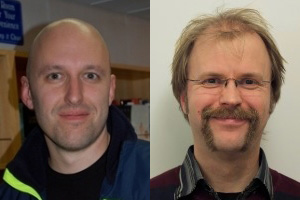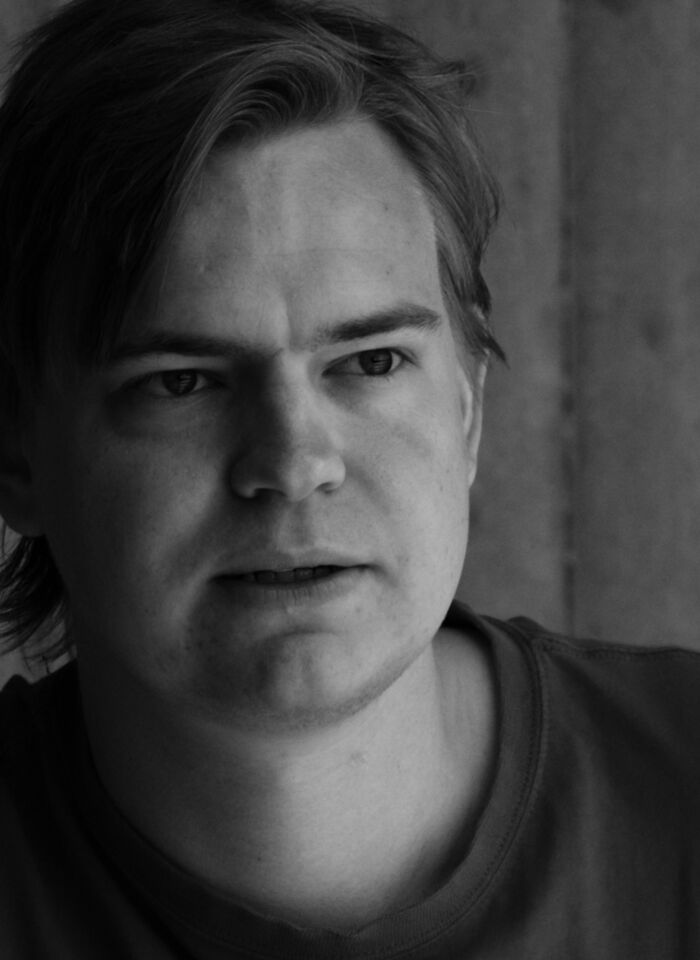Tidlegare arrangement - Side 287
Pejman Mansouri Samani, Biofysikk og Medisinsk fysikk, Fysisk instittt, UiO
Welcome to GeoHyd Lunch Seminar Wednesday Feb. 8th @ 12:15 in Aud 2 in the Geology building.
Høgskolen i Oslo og Akershus og UiO: Realfag og teknologi inviterer til en inspirasjonsdag om utdanning og karriere innen teknologi og realfag.
M.Sc. Tarjei Sveinsgjerd Hveem at the Department of Informatics will be defending his dissertation for the degree of Ph.D:
Prognostic value of large scale genomic instability by image cytometry in selected malignancies and a premalignant condition
Erik Bølviken (University of Oslo) gives a lecture with the title: Where models meet reality - The Solvency II regulation of European insurance
M. Sc. Kristoffer Robin Stokke at the Department of Informatics will be defending his dissertation for the degree of Ph.D:
High-Precision Power Modelling and Optimisation of the Tegra K1 Heterogeneous Multicore Architecture
Welcome to GeoHyd Lunch Seminar Friday Feb. 3rd @ 12:15 in Aud 2 in the Geology building.
Kimmo Kainulainen, University of Jyvaskyla
This Friday, the 3rd of February, we will discuss a paper by Davis et al. from 2016 titled "Herbivory promotes dental disparification and macroevolutionary dynamics in grunters (Teleostei: Terapontidae), a freshwater adaptive radiation".
Hope to see you there!
This thursday, at the Speciation Journal Club, we will discuss a paper entitled "Multispecies coalescent delimits structure, not species" by Sukumaran and Knowles from PNAS (2017)
Torsdag 2.februar er det offisiell åpning av UiOs nye institutt, Institutt for teknologisystemer.
The Oslo-Seminar in Mathematical Logic will take place at the same time and in the same location as in the previous terms.
Thursdays 10.15 - 12.00 in the meeting room of floor 9 in the computer science building.
The Barratt nerve BSd X of the Kan subdivision Sd X of a simplicial set X \in sSet is a triangulation. The Barratt nerve is defined as taking the poset of non-degenerate simplices, thinking of it as a small category and then finally taking the nerve.Waldhausen, Jahren and Rognes (Piecewise linear manifolds and categories of simple maps) named this construction 'the improvement functor' because of the homotopical properties and because its target is non-singular simplicial sets. A simplicial set is said to be 'non-singular' if its non-degenerate simplices are embedded. There is a least drastic way of making a simplicial set non-singular called 'desingularization', which is a functor D:sSet -> nsSet that is left adjoint to the inclusion. The functor DSd^2 is the left Quillen functor of a Quillen equivalence where the model structure on sSet is the standard one where the weak equivalences are those that induce weak homotopy equivalences and the fibrations are the Kan fibrations. I will talk about the main steps of the proof that the natural map DSd X -> BX is an isomorphism for regular X. This implies that DSd^2 is a triangulation and that the improvement functor is less ad hoc than it may seem. Furthermore, I will explain how the result provides evidence that any cofibrant non-singular simplicial set is the nerve of some poset.
Jens Chluba, University of Manchester
Since the measurements with COBE/FIRAS in the mid-90's we know that the CMB spectrum is extremely close to a perfect blackbody. There are, however, a number of processes in the early Universe that should create spectral distortions at a level within reach of present day technology. I will give an overview of recent theoretical and experimental developments, explaining why future measurements of the CMB spectrum will open up an unexplored new window to early-universe and particle physics, with possible non-standard surprises and several guaranteed signals awaiting us. I will highlight the complementarity of the distortion signals and the CMB anisotropies, illustrating how future distortions measurements could shed new light on different inflation models.
(The slides will be available here)
Inge S. Helland (Professor emeritus at Department of Mathematics,UiO) will give a seminar in the lunch area, 8th floor Niels Henrik Abels hus at 14:15.
Ramiro Logares and Anders Krabberød, EVOGENE
Vannstandsendring under flom i norske vassdrag. Etablering av en enkel hydraulisk metode for prediksjon av vannstandsendring under 500-års flom.
Siv.ing. Maria Fleischer Fauske at the Department of Informatics will be defending her dissertation for the degree of Dr.philos.:
Using optimization models to solve complex military planning problems
Welcome to GeoHyd Lunch Seminar Friday Jan. 27th @ 12:15 in Aud 3 in the Geology building.
We will have a “mingle” meeting. There will be updates from Kristine and Luc on the running of the institute. But fear not, there will also be plenty of time for informal chat and eating of cake. All are welcome to the lobby on the first floor.
This Friday, the 27th of January, we will discuss a paper by Haber and Dworkin from 2017 called "Disintegrating the fly: A mutational perspective on phenotypic integration and covariation"
Hope to see you there!
Molecular studies on selected colicin types (Expression, purification and characterization of colicin U)
Agenda for the proposal preparation meeting:
1.1 Logistics
1.2 Objectives
1.3 How to
1.4 Expected Outcome
1.5 Background
1.6 Contributing Partners
GotoMeeting/phone 216-058-909
Master in Physics Alexander Hupfer at Department of Physics will be defending the thesis Hydrogen related point-defects in mono-crystalline zinc oxide for the degree of Philisophiae Doctor.
This thursday, at the Speciation Journal Club, we will discuss a paper entitled "Shedding Light on the Grey Zone of Speciation along a Continuum of Genomic Divergence" by Roux et al. in PLoS Biology (2016)





